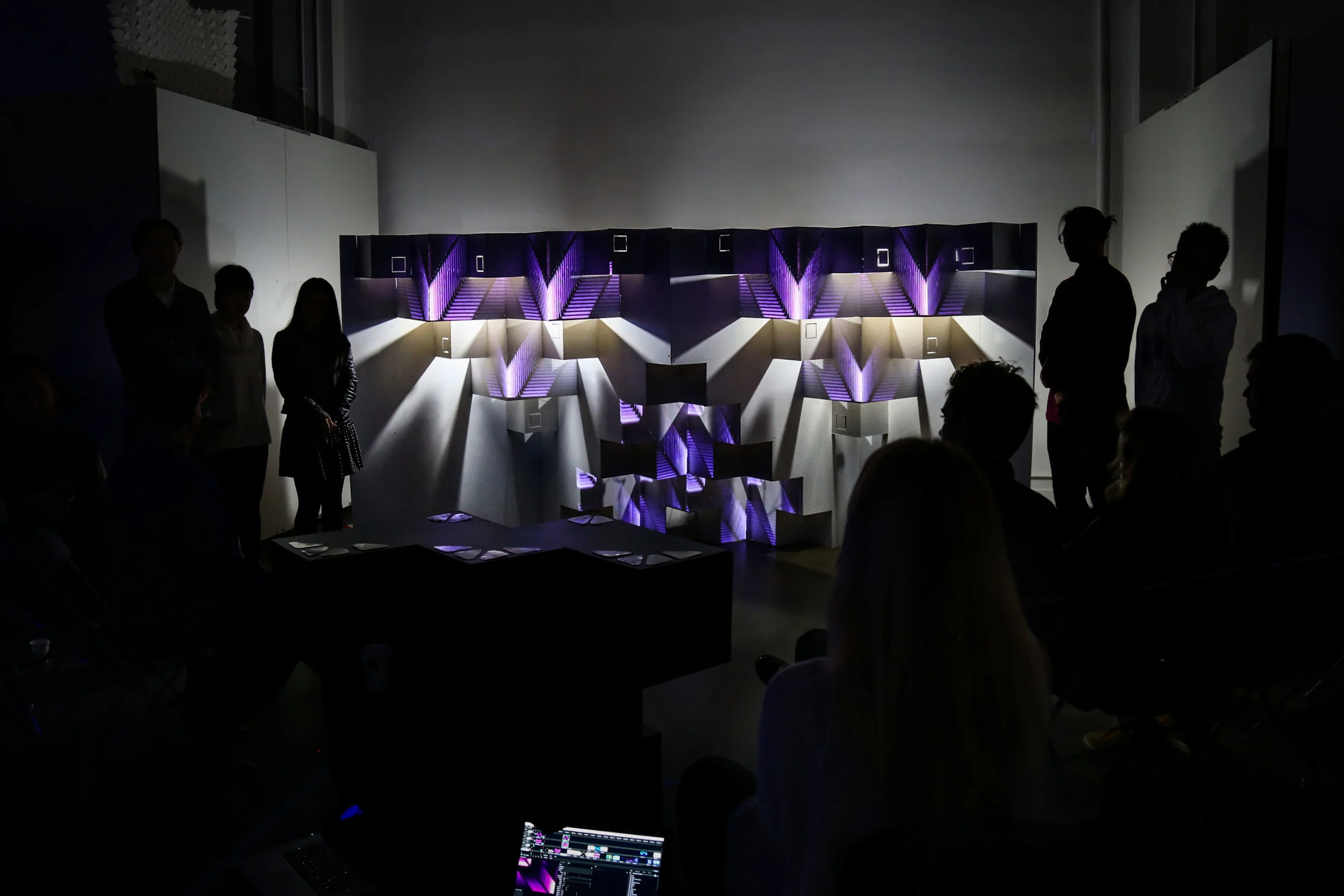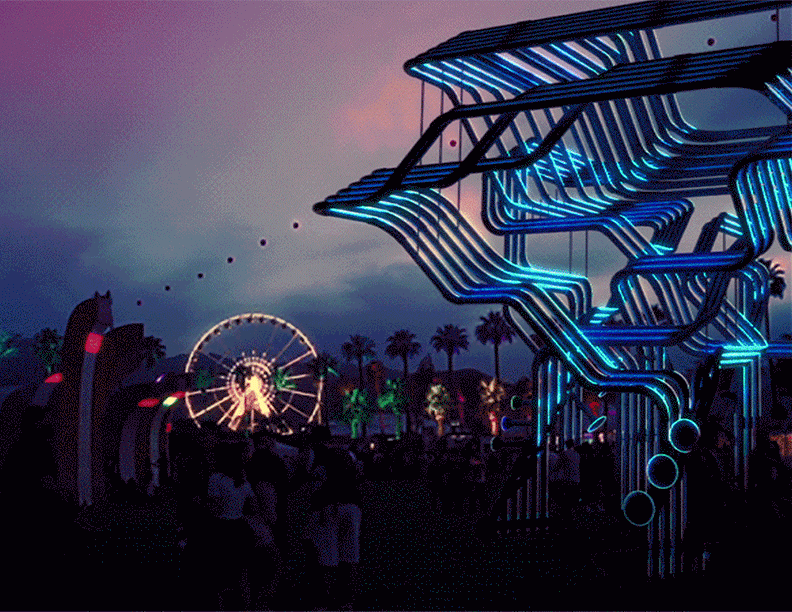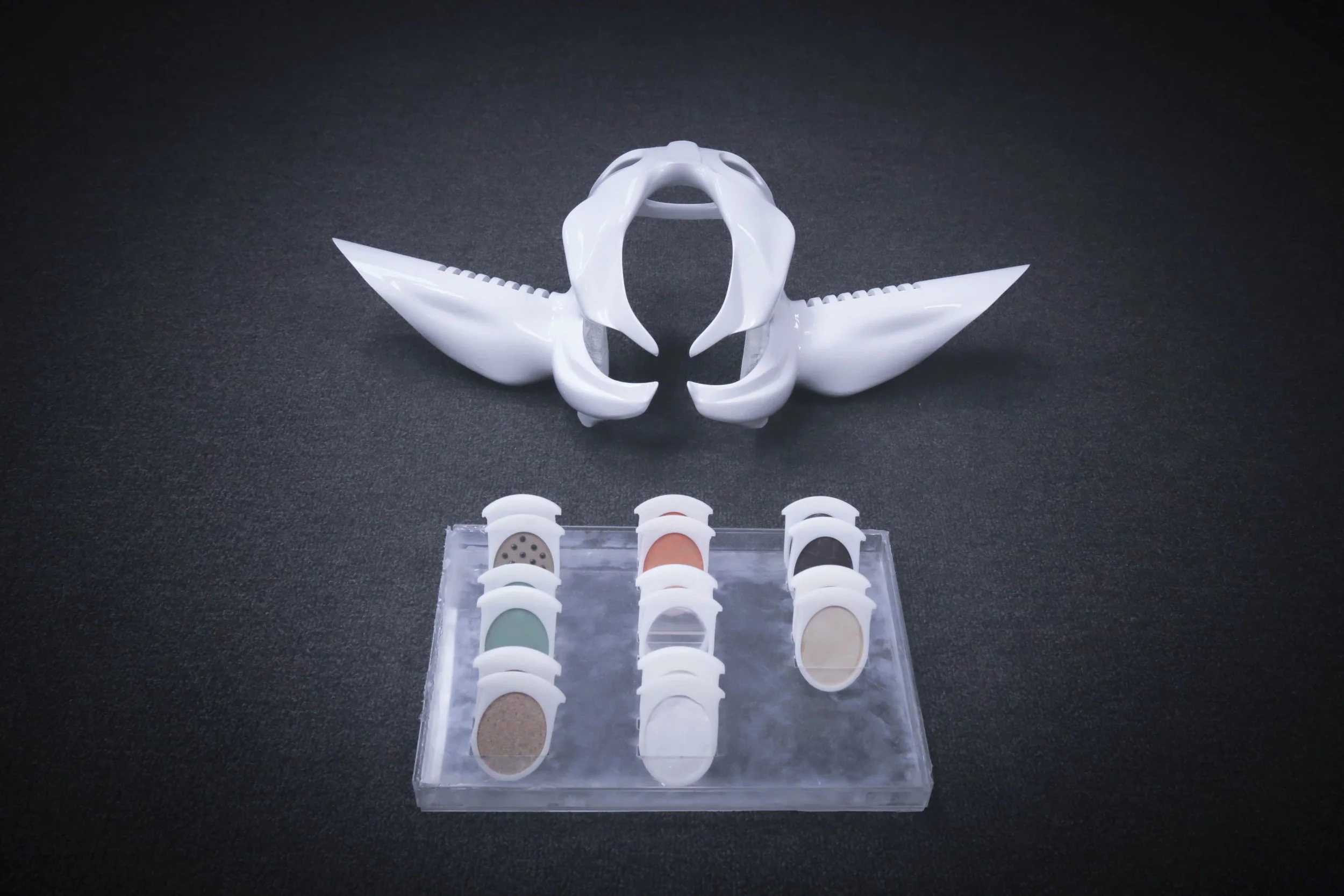Concept
A strand-like object that enables users to explore sound by creating shapes. The user is allowed to discover the possibilities of instruments by modelling signifiers that may represent iconic instruments or other objects and ideas. The recognized shapes are associated with instruments, and a different mode of play is enabled for different instruments.
Implementation
The strand is formed by an array of short styrene segments on each side of the strip, providing structural support and for the 20 flex sensors and their wirings, as well as side grooves for the Nitinol wires, two on each side.
A long brass strip between these layers retains the accelerometer, proximity sensor, and magnet are attached and protected by a foam, which also works as a handle.
Interaction
As an object similar to a rope, the object affords being deformed and constructed by hand. The affordance of the materials allows the user to form shapes that have a geometric appearance. Hinges indicate where the user is able to bend, while other parts of the object are styrene plastic, and won’t bend.
As shown in Figure, the natural gestures of shaking and tapping, detected by the device with the use of an accelerometer, naturally indicate to the user which sound will come out of it each time the object is transformed into a new shape. The proximity sensing capability of the instrument also facilitates performing music on iconic shapes, by touching or strumming the area inside of a 2D-shape.
Applications
The deformable strand-like interface can be used as an independent musical interface for composing and performing music, or as a secondary tool for shaping or modulating sound, complementing a main instrument. The fact that the user can shape this object to produce different instruments or sounds supports the realization of a ‘one man’s band’, in which one person could recreate any of his or her desired instrument and compose music or complete a full musical performance with only a single object.
Since MIDI protocol is adapted, not only that this enables easy ‘plug and play’ connection to any audio workstation, but it also allows musicians, sound artists, and interaction designers to explore the capability of this instrument and express themselves, by personally mapping and experimenting different sound metaphors. Furthermore, the physicality of this instrument could also motivate children to learn more about the perception and physics of sound through the manipulation of shapes.
The project paper got accepted by CHI 2018 (The ACM CHI Conference on Human Factors in Computing Systems )

























































































